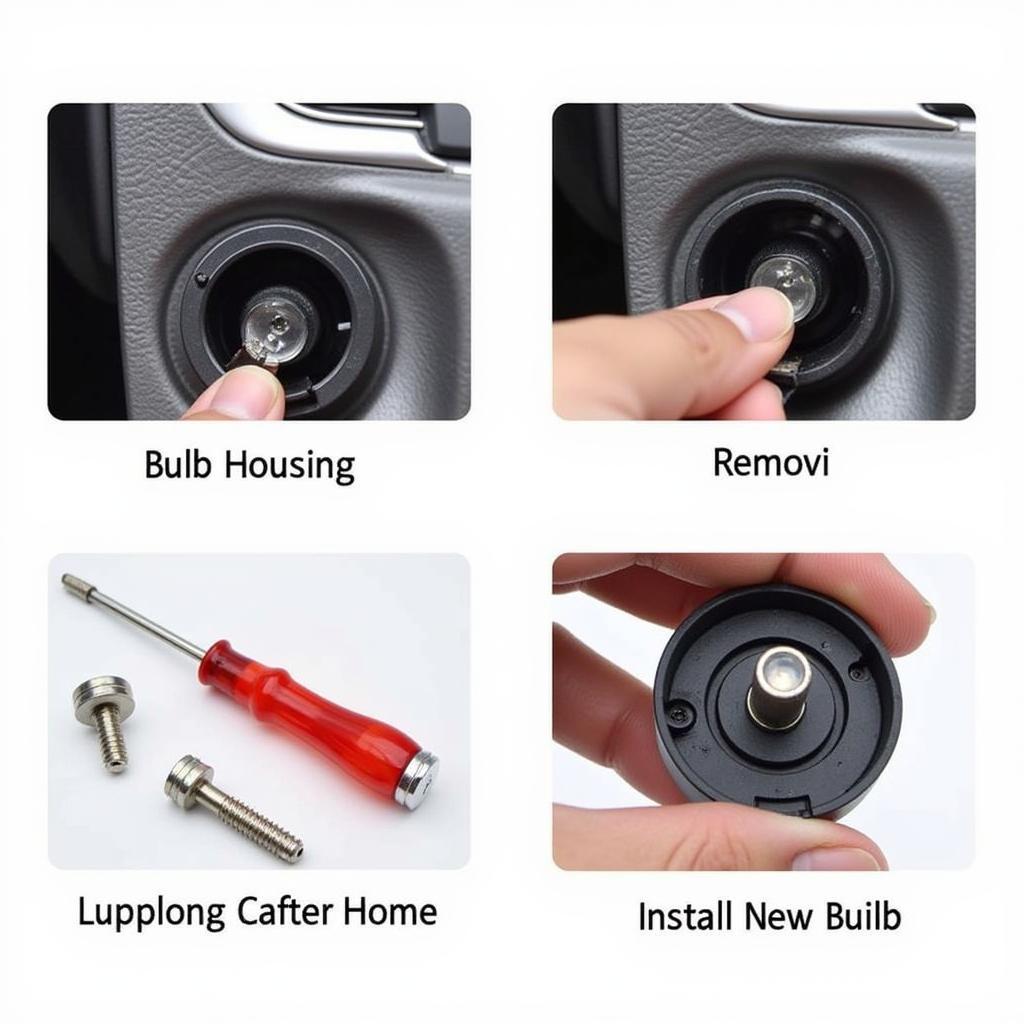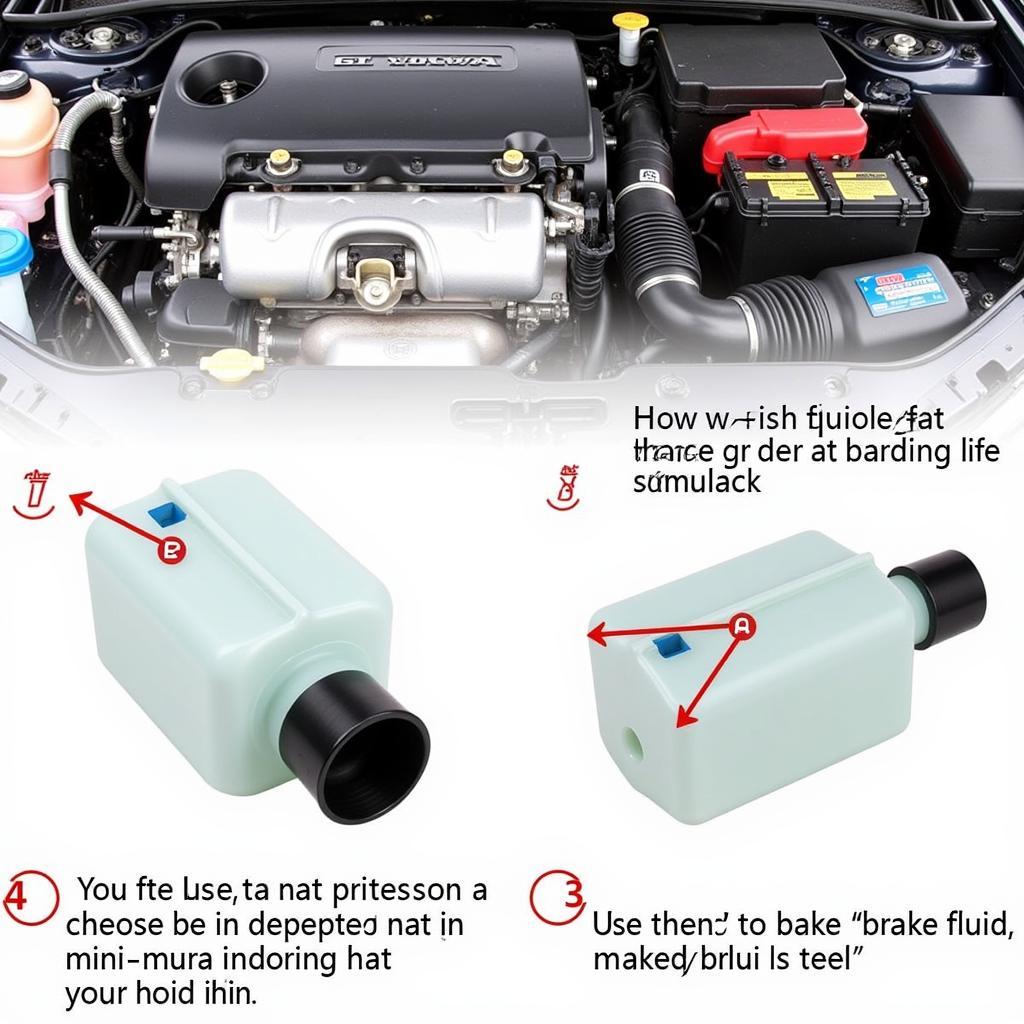The dreaded Honda Accord brake lamp warning light can be a source of frustration and concern. This article provides a comprehensive guide to understanding, diagnosing, and fixing the issue, offering remote software solutions where applicable and providing valuable insights for Honda Accord owners.
If your brake warning light illuminates, it signals a potential problem within your braking system, demanding immediate attention. This could range from a simple burnt-out bulb to more complex issues like low brake fluid or a malfunctioning ABS system. Understanding the root cause is crucial for ensuring your safety and the proper functioning of your vehicle. Learn more about specific model years like the 2001 Honda Accord at 2001 honda accord brake lamp warning light.
Common Causes of the Brake Lamp Warning Light
Several factors can trigger the brake lamp warning light in your Honda Accord. Identifying the specific cause is the first step toward resolution.
- Burnt-out Brake Light Bulbs: This is often the most common and easiest issue to fix.
- Low Brake Fluid: A low brake fluid level can indicate a leak in the brake system, which needs immediate professional attention.
- Faulty Brake Light Switch: This switch activates the brake lights when you press the brake pedal. A malfunction can cause the warning light to illuminate.
- ABS Issues: Problems with the Anti-lock Braking System (ABS) can also trigger the warning light. This usually requires specialized diagnostic equipment.
- Worn Brake Pads: While less common, excessively worn brake pads can sometimes activate the warning light.
For specific issues with the 2001 Honda Accord, see brake lamp warning light honda accord 2001.
Diagnosing the Problem
Diagnosing the issue requires a systematic approach. Begin by checking the simplest possibilities and progress to more complex ones.
- Inspect the Brake Light Bulbs: Visually check all brake light bulbs for signs of burning out. Replace any faulty bulbs.
- Check the Brake Fluid Level: Locate the brake fluid reservoir and check the fluid level. If it’s low, top it off and monitor for leaks.
- Test the Brake Light Switch: Use a multimeter to check the continuity of the brake light switch. Replace the switch if necessary.
- Check for Diagnostic Trouble Codes (DTCs): Use an OBD-II scanner to check for any stored DTCs related to the braking system. This can pinpoint the specific area of concern.
 Replacing a Brake Light Bulb on a Honda Accord
Replacing a Brake Light Bulb on a Honda Accord
Remote Software Solutions
In some cases, the brake lamp warning light may be triggered by software glitches within the vehicle’s electronic control units (ECUs). Remote software solutions, such as ECU reprogramming or firmware updates, can sometimes address these issues. These procedures often require specialized equipment and software accessible to qualified technicians.
Professional Diagnosis and Repair
If the issue persists after basic troubleshooting, it’s crucial to seek professional assistance. A qualified technician can perform a comprehensive diagnosis using advanced diagnostic tools and address any underlying problems effectively. If you have a 2002 model, you may want to check out this resource: brake lamp warning light 2002 honda accord.
 Checking the Brake Fluid Level in a Honda Accord
Checking the Brake Fluid Level in a Honda Accord
“Regular brake system maintenance is crucial for preventing issues and ensuring optimal performance,” advises John Smith, Automotive Engineer at CARDIAGTECH. “This includes regular brake inspections, fluid flushes, and timely replacement of worn components.”
Preventing Future Problems
Regular maintenance plays a vital role in preventing future brake lamp warning light issues.
- Regular Brake Inspections: Have your brakes inspected by a qualified technician at least once a year or as recommended by the manufacturer.
- Brake Fluid Flushes: Flush your brake fluid according to the manufacturer’s recommended intervals.
- Timely Component Replacement: Replace worn brake pads, rotors, and other components as needed.
“Addressing brake issues promptly can prevent more serious and costly repairs down the road,” says Jane Doe, Senior Technician at Auto Solutions Inc.
Conclusion
The Honda Accord brake lamp warning light should never be ignored. By understanding the potential causes, employing systematic diagnostic techniques, and seeking professional help when needed, you can ensure the safety and reliability of your vehicle. Remember to check out our guide on testing brake warning lights how do you test a brake warning light. Regular maintenance is also key to preventing future problems and keeping your Honda Accord’s braking system in top condition.
For owners of older models like the 1991 Accord, 91 accord brake lamp warning light might be a useful resource. Don’t delay in addressing this important safety concern.
